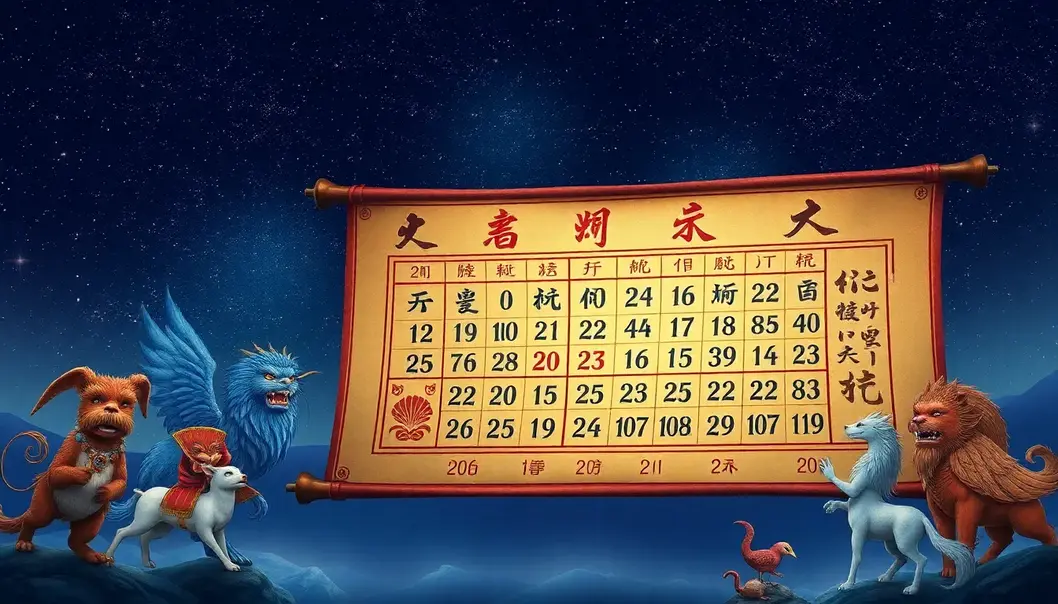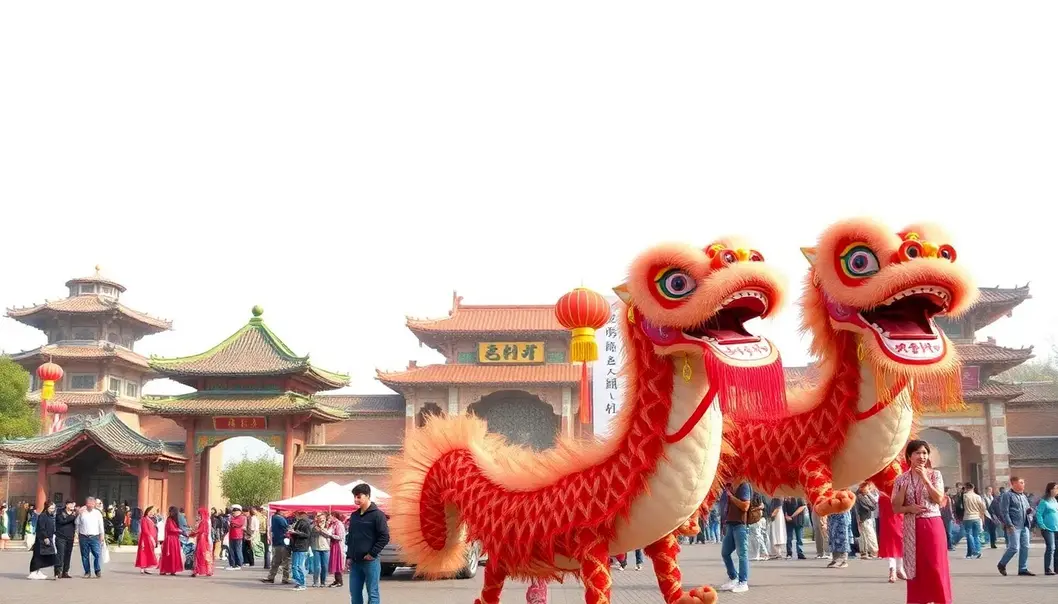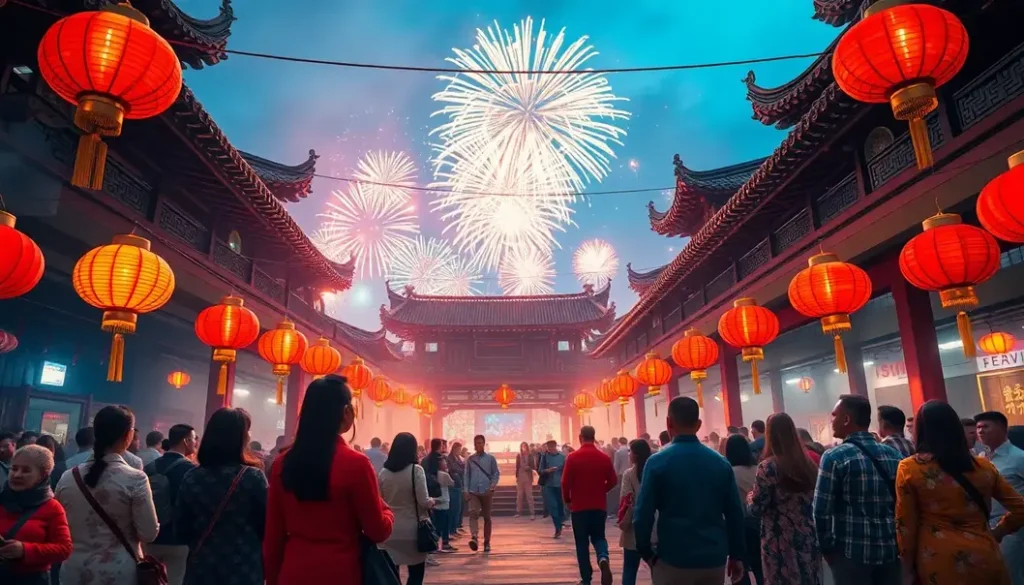Every year, millions of people around the globe come together to celebrate the Lunar New Year, a festival that ushers in a season of renewal, hope, and good fortune. But what lies beneath the fireworks and dragon dances? This article explores the age-old traditions and vibrant history behind one of the most widely observed celebrations. By journeying through time, we’ll uncover how this festival has evolved across cultures while maintaining its core values. Whether you’re ringing in the year with your family or exploring the Chinese zodiac for the first time, understanding these traditions can enrich your appreciation for this dazzling tapestry of cultural heritage.
How It All Began: The Origins of Lunar New Year

The origins of the Lunar New Year can be traced back thousands of years, rooted deeply in ancient agrarian societies. As the winter frost thawed, agricultural communities across China prepared for the spring planting season with celebrations to ensure a bountiful harvest. These early festivities laid the groundwork for what we now recognize as the Lunar New Year, or Spring Festival.
Various myths and legends intertwine with the festival’s history, adding layers of cultural significance. One of the most prominent stories is that of Nian, a fearsome beast believed to devour crops and terrorize villages at the end of each lunar year. According to legend, villagers discovered that bright lights, loud noises, and the color red could repel the creature. As a result, these elements became integral to the celebrations, symbolizing humanity’s triumph over adversity.
The historical evolution of Lunar New Year is also marked by its adaptation to various dynastic changes in China. During the Han Dynasty (202 BC–220 AD), the festival began to take on more formalized rituals, aligning with state ceremonies and religious practices. By the time of the Tang Dynasty (618–907 AD), the festival had expanded to include lavish banquets, ornate decorations, and elaborate performances, drawing influences from the Silk Road and integrating customs from various cultures.
With the introduction of the lunar-solar calendar, the timing of the festivities evolved to align with the second new moon following the winter solstice. This adaptation not only solidified the festival’s place in the year but also ensured its celebration was intrinsically tied to the cycles of nature, reinforcing its agrarian roots and its significance as a renewal and cleansing period.
The Han and Tang dynasties’ influences set the stage for what would become a grand celebratory tapestry of traditional practices that continue to thrive today. These adaptations reflect the broader societal shifts and the dynamic exchange of cultural elements through trade and interaction. Although the essence of the festival has remained unchanged, the nuances of its celebration have been molded by the currents of history and cultural exchange, a testament to its lasting importance.
For more insights into how cultural practices adapt and blend with new environments, take a look here. Just as a home can be tailored to be more welcoming for its inhabitants, so too can cultural celebrations evolve to fit new locales and times.
In exploring the intricate history of Lunar New Year, we not only gain insight into ancient customs but also discover the enduring nature of tradition in the face of relentless change. The evolution of these early festive practices highlights their role as a unifying thread, binding generations past and present through shared heritage and collective hope for the future.
A World of Celebrations: Variations Across Cultures

Lunar New Year is a tapestry of diverse cultural expressions, uniquely celebrated across various countries in Asia. Each nation adds its own rich traditions, vibrant foods, and engaging activities to the festival, revealing a spectrum of culturally significant rituals.
In China, the Lunar New Year, also known as the Spring Festival, is a fifteen-day celebration of family, prosperity, and good fortune. The holiday is marked by the sweeping away of ill-fortune and the invitation of luck into homes, symbolized through thorough cleaning and elaborate decorations featuring red lanterns and intricate paper-cut designs. The celebration peaks with the Lantern Festival, where thousands of brightly lit lanterns fill the night sky. A culinary staple during this time is the dumpling, representing wealth and prosperity, carefully crafted and enjoyed by family members around festive gatherings.
Similarly, in Korea, Lunar New Year is known as Seollal, a deeply rooted family holiday that promotes respect and honor for ancestors. Among its traditions is the ritual of “charye,” an ancestral rite held in reverence for family members who have passed away. Families also engage in the practice of “sebae,” where younger members bow to their elders, who in return offer blessings for the coming year. A traditional dish, “tteokguk”—a soup made with thinly sliced rice cakes—is consumed as a symbolic meal that signifies age advancement, aligning with the idea of personal growth and renewal.
In Vietnam, Tet Nguyen Dan, or Tet, represents the arrival of spring and is perhaps the most important festival of the year. The Vietnamese celebration is akin to the joyous glow of renewed life, heralded by the blossoming of peach and apricot blossoms. Central to Tet festivities is the preparation and sharing of “bánh chưng,” a square cake made from sticky rice, mung beans, and pork, wrapped in green leaves. This dish signifies the harmony between heaven and earth. Families often spend weeks preparing for Tet, creating a sense of anticipation and togetherness that underpins the celebrations.
Elsewhere in Asia, such as in Singapore and Malaysia, the festival is known for its rich fusion of local traditions. Families often gather for reunion dinners, prioritizing unity and the sharing of “yu sheng,” a prosperity salad tossed by all members around the table with a lively chant of auspicious phrases. This dish brings an interactive element to the festivities, emphasizing collective good fortune.
These variations in Lunar New Year celebrations illustrate the delightful array of cultural practices that highlight the importance of family ties, respect for tradition, and the universal aspiration for prosperity and happiness. Exploring these dynamic differences enriches our understanding of how communities uphold and commemorate their unique heritage during this auspicious time of renewal.
Final words
The Lunar New Year is more than just a day on the calendar—it’s a celebration of family ties, cultural identity, and shared hopes for the future. Whether taking part in time-honored traditions or creating new ones, each celebration is a chance to reflect on past achievements and look forward to new beginnings. By understanding its profound history and cultural richness, we can all participate in a more meaningful celebration. So, as you prepare for the coming year, remember the stories and meanings that have carried this festival through millennia.
Dive deeper into cultural celebrations with our ultimate Lunar New Year guide!
Learn more: https://www.culturalcelebrations.com/lunar-new-year-guide
About us
Cultural Celebrations Co. offers unique insights and products that bridge global traditions with modern festivities, helping you connect more deeply with the seasonal ebbs and flows of diverse cultures. Explore our resources and collections for a celebration full of meaning and unity.

